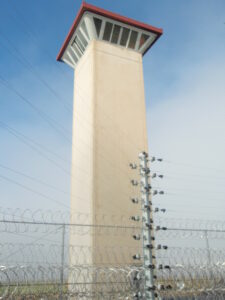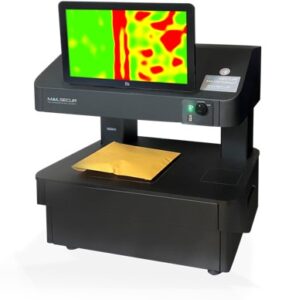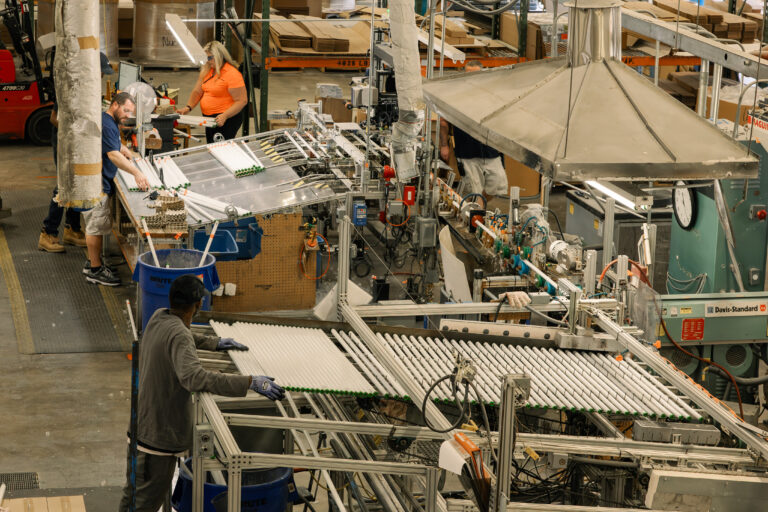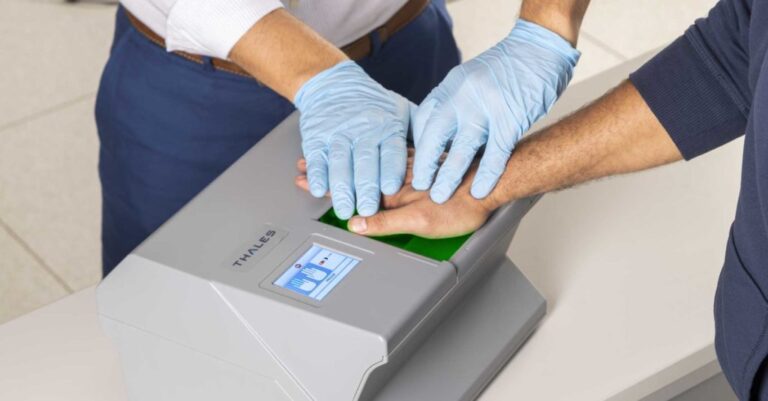Correctional Facility Perimeter Security Helps Facilities Block Contraband and Reinforce Security

Photo: Tautwire alarms on contact, offering high reliability with low false alarm rates.
Photo Credit: Buford Goff & Associates
By Kat Balster
In the correctional environment, the perimeter has two equally important functions. As Bobby Lumpkin, chief operations officer for the Texas Department of Criminal Justice (TDCJ), put it, “Perimeter security is as much about stopping people from getting out as it is about stopping things from getting in.”
From escape attempts to contraband smuggled via drones, mail or even staff, today’s correctional facilities face increasingly complex threats. The challenge lies in maintaining safety and operational security for staff, residents and the public, while adapting to technological advances and staffing constraints.
Reimagining the Fence Line

Photo Credit: TDCJ
Few understand this balance better than Keith Summer, principal of the security electronics group at Buford Goff & Associates (BGA). With more than 40 years in perimeter and electronic security, beginning in nuclear energy, Summer says correctional facilities must think beyond the chain-link-and-razor-ribbon model.
“Perimeter design is a layered approach built around what we call the five D’s: Deter, Detect, Delay, Defend and Deny,” Summer explained. “You need equal protection around the entire perimeter, not just deterrence. You need detection and response capability in place.”
Modern perimeter design often includes fiber-optic systems, microwave shaker fences and zone-based monitoring.
“Fiber is our go-to lately,” said Summer. “It’s accurate, immune to lightning and doesn’t require trenching or buried conduit. It also helps reduce false alarms, which can lead staff to ignore real threats.”
Camera systems can support perimeter alarms by providing context and verification, Summer noted, though they shouldn’t be the sole method of detection. “AI may play a larger role soon, particularly for behavior detection or public-side contraband monitoring, but boots on the ground remain essential for any credible response.”
Texas Takes a New Approach
In Texas, where TDCJ manages 102 facilities (soon to be 103), Lumpkin is overseeing one of the nation’s largest perimeter security overhauls. Historically, all facilities had manned perimeter towers and regular patrols. But severe staffing shortages pushed TDCJ to adopt new systems.
“Back in April 2022, we were short about 8,300 correctional officers,” Lumpkin said. “Today, we’ve cut that nearly in half—down to just under 5,000—and with the new perimeter systems, we’ve already been able to reduce about 200 posts without a single layoff.”
The shift involves installing less-than-lethal pulse fences on maximum-security units and microwave shaker systems on medium- and minimum-security facilities.
“Twelve to eighteen months in, none of the new fences have been defeated,” said Lumpkin. “One person tried and jumped off when the voltage increased.”
Each system goes through a 30-day test phase before operational use, allowing staff to calibrate sensors and address false alarms. Once implemented, most sites reduce staffed towers from several to just one, while maintaining 24-hour perimeter patrols. By reducing dependence on fixed guard posts, TDCJ anticipates a reduction of 500 positions statewide, without layoffs, allowing the reallocation of staff to more critical areas.
Beyond the Fence: Contraband Detection

Photo Credit: RaySecur
While physical perimeters remain critical, another major contraband route is through the mail—especially legal mail, which cannot be scanned or digitized due to privacy laws.
“That’s where we have an ongoing challenge,” Lumpkin said. “Synthetic cannabinoids and other substances are coming through legal mail, soaked into paper.”
To combat this, TDCJ deployed advanced mail-screening systems from RaySecur.
“It looks similar to an overhead projector,” Lumpkin said, “but it can assist in detecting if possible contraband is within the sealed envelopes without opening them. We receive 82,000 pieces of legal mail, and this technology lets us scan it safely.”
RaySecur’s CEO, Alex Sappok, Ph.D., explained how the tech works. “Our imaging system uses terahertz frequencies, or T-rays— completely safe and noninvasive—to visualize contraband inside sealed items. We’re 300 times more sensitive than X-ray to detect powders, liquids, suboxone and even laced paper down to a single treated sheet in a stack.”
These units are now also used beyond the mailroom, including mobile deployment to screen items in cells or personal effects, extending detection capability to contraband that enters through other means, such as drones, visitors or corrupt staff.
Real-Time Screening Without Opening a Single Envelope
RaySecur’s MailSecur mail screening technology uses safe terahertz imaging to detect contraband hidden in sealed envelopes and packages without opening them. The system is 300 times more sensitive than X-ray to detect powders, liquids, synthetic substances and laced paper in real time.
KEY FEATURES:
- Noninvasive imaging: Maintains privacy for legal mail
- Enhanced safety: Reduces staff exposure to fentanyl and other toxins
- Mobile and adaptable: Can be used beyond the mailroom to screen personal items
- Live expert support: 24/7 access to trained analysts for second opinions
USE CASE:
Addressing the flow of synthetic drugs through legal mail, RaySecur offers a scalable, staff-friendly solution to a growing contraband threat.
This feature was originally published in the May/June edition of Correctional News. To read the remainder of the article including Applications and Takeaways, please go to: Technologies that Protect Inside and Out






